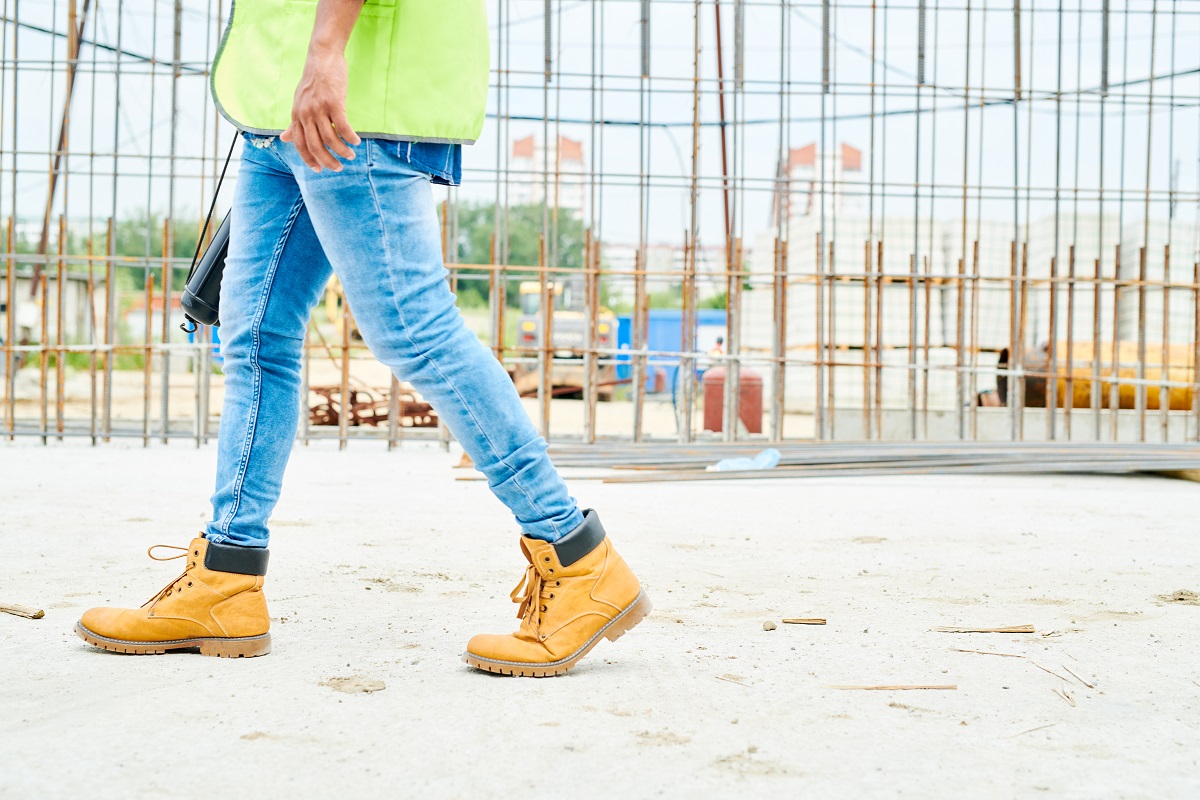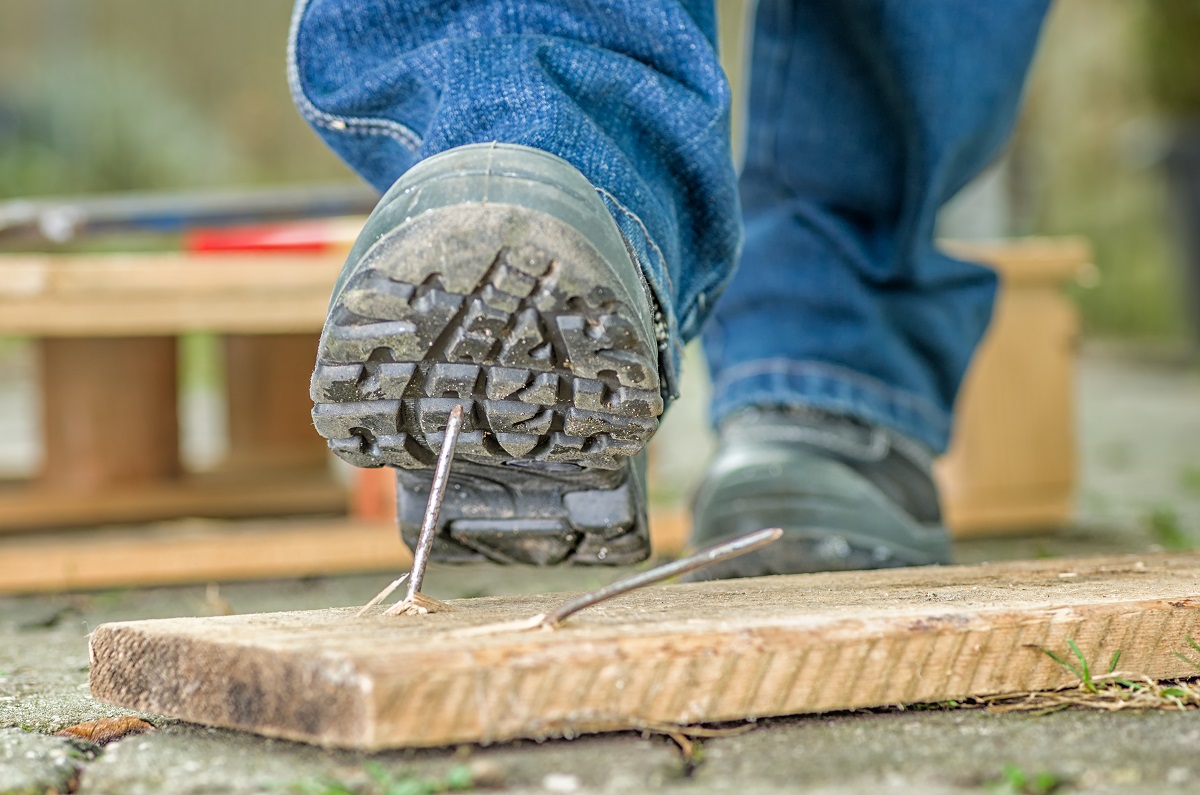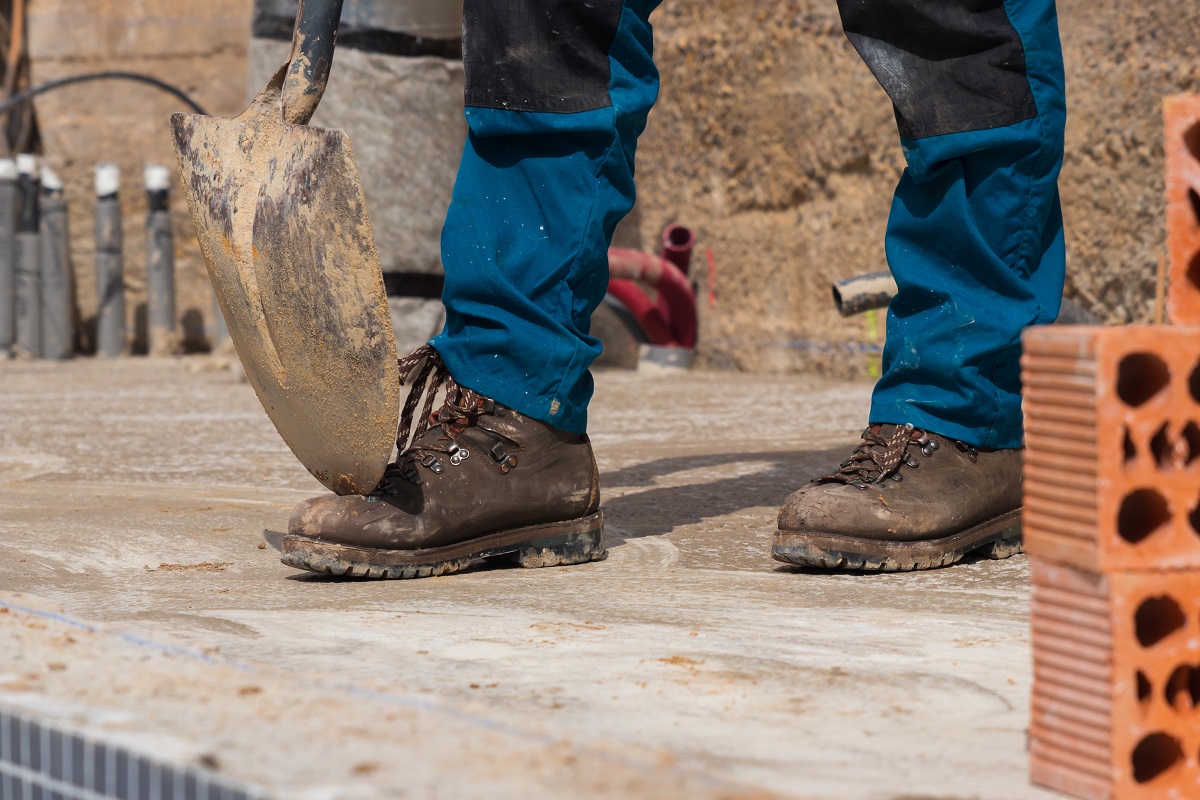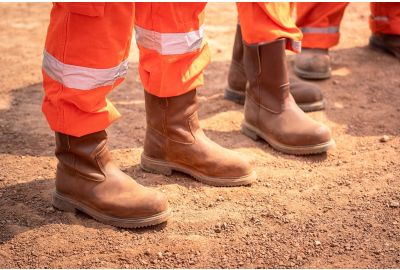Wearing the correct equipment is key when it comes to construction safety, and an essential part of this is wearing heavy-duty construction footwear such as steel-toe cap boots.
All construction sites should have temporary protection products on their site, ranging from carpet protection film to stair protection, as this helps to protect a building from the work being carried out. Something equally important is wearing safety equipment such as footwear, as many construction sites have heavy machinery on them, and certain jobs take place on a site which come with an element of risk.
In this guide, we look at whether you have to wear safety footwear and how construction site workers can protect their feet.
Do I have to wear construction footwear on a site?

The simple answer is yes. All construction workers are expected to wear protective footwear while doing heavy work on a site.
It is easy to hurt your foot, and if you break a bone or damage tendons in your foot, it can keep you away from work and restrict your movement for months.
The Health and Safety Executive talks about the types of footwear you should wear on a construction site and what you need to look out for:
“Steel toecaps (or equivalent) protect against dropped objects. Midsole protection (usually a steel plate) protects against puncture or penetration if you tread on a nail. If you need to enter or work on a construction site, your employer will provide a basic standard of safety footwear. You do not have to pay for this so long as you look after it and make it last a reasonable time. If there are medical reasons why you cannot wear basic safety footwear, your employer will pay for suitable kit.
“Ensure any PPE you buy is 'CE' marked and complies with the requirements of the Personal Protective Equipment Regulations 2002. The supplier/manufacturer should be able to tell you if the PPE is suitable for the type of task.”
ALSO READ: What you need to know about PPE requirements on a construction site?
Steps to avoid foot injuries on a construction site

Here, we consider some factors to keep your feet healthy at work.
Conduct a risk assessment
Before you purchase construction safety footwear, you should conduct a risk assessment of the workplace, and this will indicate what hazards you need to protect your workers from or, if you are an employee, what boots you should be wearing.
Site managers should always speak to their construction workers to get opinions on any day-to-day risks that might have been missed during the initial risk assessment.
Some of the hazards that a risk assessment should look at are:
- Chemical splash
- Wet conditions
- Falling objects
- Slipping, punctures, and cuts
- Metal or glass
- Electrostatic build-up
- Outdoor or indoor use
ALSO READ: The HS&E test explained
Research what EN ISO 20345:2011 is
You may ask the question, ‘What is EN ISO 20345:2011’? Essentially, all shoes across the UK and the EU are classified as ‘protective footwear’ and are measured against EN ISO 20345:2011.
Having a basic understanding of what this is will allow you to properly equip your staff with the best construction safety footwear.
The EN ISO 20345:2011 is a guide for the minimum levels of protection safety boots & shoes must adhere to. Some safety shoes, for example, have additional features that offer more protection and resistance.
What are the different EN ISO 20345 ratings?
- SRA: The boots have been tested on ceramic tile with sodium lauryl sulphate (a diluted soap solution).
- SRB: Tested on steel with glycerol.
- SRC: Tested under SRA and SRB conditions.
- SB: The boots meet the minimum standards of 200-joule impact. Toe protection includes steel toe caps or lighter alternatives, such as composite or aluminium toe caps.
- SBP, S1P, S3, S5: Boots which offer midsole penetration protection that can guard against nails and other sharp objects. To meet the requirements of the EN ISO 20345 standard, footwear midsoles must be able to resist a penetration force of 1100N.
- A, S1, S1P, S2, S3: This boot offers antistatic protection. There are some materials in footwear that can over-insulate the body and cause a static charge to be held. When a worker touches something conductive, it can cause a small shock, but anti-static footwear reduces this effect.
- WR, WRU, S2, S3: Footwear can be classed as water-resistant if they have any of these ratings associated with them.
- HRO: Boots rated with HRO are heat-resistant and can boast an outsole that resists 300°C for 60 seconds.
- CI: This provides insulation against the cold for 30 minutes at -20C.
- HI: This provides insulation against the heat for 30 minutes at 150C.
- E, S1, S1P, S2, S3: This rating refers to energy absorption in the heel region.
ALSO READ: Construction safety signs and their meaning
Select the correct footwear and fit

Once you have familiarised yourself with EN ISO 20345:2011, the onus is on the employer to provide suitable equipment free of charge.
All construction workers must wear protective footwear while on-site and doing heavy work. This includes wearing steel toecaps and wearing footwear which has midsole protection.
Another vital element when choosing construction footwear is to ensure that it fits correctly. There should be enough room at the front of the boot so you can wiggle your toes. Most experts say that there should be around 1cm between the longest toe and the front of the shoe.
Keep an eye on the weather
The weather can affect our feet, especially if most of the work is outdoors. It is, therefore, vitally important to track the weather because working in cold conditions without the correct thermal protection in your footwear can lead to Chilblains, Trench foot or even frostbite.
Feet can struggle in hot temperatures, too, as construction workers' feet can swell, and excessive sweating can cause blisters and fungal problems like athlete’s foot.
It is wise to make sure construction workers are washing and drying their feet at the start and end of every day. For people who suffer from athlete’s foot or similar conditions, there are socks that can help reduce excess moisture that might help.
ALSO READ: Weatherproofing your construction site through the seasons
As this guide demonstrates, it is vitally important that construction workers wear protective equipment such as construction footwear. If you work in the construction industry and need temporary protection products such as a heavy-duty polythene sheet or other products, we have a variety of protection solutions at Beck.
For more tips, guides, and advice, visit our news page.

